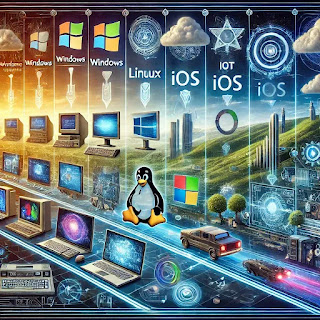When choosing where to invest in future technologies, there's often a tug-of-war between what's groundbreaking and what's actually implementable. In the case of three competing proposals—revamping the instruction set architecture (ISA), boosting PCI transfer speeds, or enhancing POSIX compliance—the smart money goes on the PCI upgrade. It’s not the flashiest choice, but it’s the one that delivers real, tangible performance improvements without demanding a full-on teardown of existing infrastructure. Think of it as upgrading your starship's warp drive without having to rebuild the entire nacelle system.
Doubling PCI transfer speeds while keeping backward compatibility is a major win, especially in compute-heavy fields like gaming, AI modeling, and real-time data crunching. According to eInfochips (2024), PCIe 6.0 clocks in at a blazing 256 GB/s over a x16 configuration, all while playing nice with previous PCIe versions. That’s a technical feat worthy of applause—and maybe even a Vulcan salute.
Unlike a new ISA, which would require sweeping changes to compilers, firmware, and likely entire software ecosystems (not to mention massive developer re-training), the PCI proposal is grounded in reality. It builds on existing standards and slips into current workflows with minimal disruption. That’s not just convenient—it’s cost-effective.And while improving POSIX compliance is always a good move (especially for encouraging cross-platform development), it’s more of a slow-burn benefit. Bhuyan (2024) notes that POSIX-compliant environments support the flexibility modern developers crave. But compared to PCI's immediate performance payoff, it’s a harder pitch to justify in the near term. POSIX improvements are the kind of enhancement that makes a system better under the hood but doesn’t exactly send sparks flying on the spec sheet.
The cherry on top is ecosystem readiness. Synopsys (2023) reported a successful dual-party PCIe 6.0 linkup, showing that this isn’t just a pipe dream—it’s a pipeline, already under construction.
In short, if you're looking to deliver real user impact without entering an R&D black hole, PCI is the logical move. It's the upgrade that aligns engineering ambition with operational sensibility, making it the most strategic choice for companies who want to boldly go—but not blindly leap.
References
Bhuyan, A. (2024, September 16). Understanding CISC and RISC architectures in modern computing. Medium. https://aditya-sunjava.medium.com/understanding-cisc-and-risc-architectures-in-modern-computing-e42c4e6e802d
eInfochips. (2024, August 21). Unveiling pcie 6.0: A leap forward in high-speed connectivity. Medium. https://medium.com/%40einfochips/unveiling-pcie-6-0-a-leap-forward-in-high-speed-connectivity-e2c883e7ce6a
Synopsys. (2023, March 6). Data-driven world gets a lift with first two-party pcie V6.0 linkup. Medium. https://medium.com/%40synopsys/data-driven-world-gets-a-lift-with-first-two-party-pcie-v6-0-linkup-by-synopsys-and-keysight-b4fd2a531fc4







